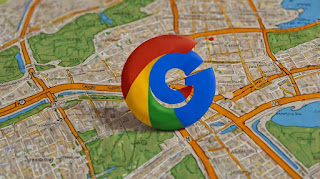Why Iceland is Greeny?


In today's digital age, maps have become an integral part of our daily lives, guiding us through unknown terrains, helping us discover new places, and aiding in efficient navigation. Among the many map services available, Google Maps stands out as a household name, while ISRO's Bhuvan is steadily gaining recognition. Let's delve into a comparative analysis of Google Maps and ISRO Maps to understand their strengths, weaknesses, and unique features.
Google Maps, developed by Google, is arguably the most popular mapping service worldwide. It offers comprehensive coverage of almost every corner of the globe, providing detailed street maps, satellite imagery, real-time traffic conditions, and route planning functionalities. Here are some key features of Google Maps:
Google Maps covers virtually every country and offers detailed street-level maps for urban and rural areas alike.
It provides turn-by-turn navigation for driving, walking, biking, and public transit, complete with real-time traffic updates and alternative route suggestions.
 |
| Google Map vs ISRO Map |
Users can explore nearby restaurants, shops, attractions, and reviews, making it a powerful tool for local discovery.
Google Maps offers Street View imagery, allowing users to virtually explore streets and landmarks at ground level.
It seamlessly integrates with other Google services like Google Earth, allowing users to view 3D maps and satellite imagery.
ISRO's Bhuvan, launched by the Indian Space Research Organization, is India's answer to satellite mapping services. Bhuvan focuses on providing detailed satellite imagery and thematic maps of India, catering specifically to Indian users. Here are the distinctive features of Bhuvan:
Bhuvan offers high-resolution satellite imagery of India, which is particularly useful for applications like urban planning, agriculture, and disaster management.
It provides thematic maps such as soil, vegetation, land use, and geological maps tailored to the Indian context.
 |
| Google Map vs ISRO Map |
Bhuvan plays a crucial role in disaster management by providing real-time information during natural calamities like floods, earthquakes, and cyclones.
Developed by ISRO, Bhuvan showcases India's indigenous capabilities in satellite mapping and geospatial technology.
ISRO promotes open data access through Bhuvan, allowing researchers, government agencies, and developers to use its data for various applications.
Google Maps offers global coverage with comprehensive street-level detail, making it suitable for users worldwide. In contrast, Bhuvan focuses primarily on India, providing high-resolution imagery and specialized maps tailored to Indian users' needs.
Bhuvan excels in thematic mapping and disaster management support, leveraging ISRO's satellite technology for specific applications. Google Maps, on the other hand, emphasizes navigation, local business information, and global coverage.
Google Maps is renowned for its user-friendly interface, extensive features, and integration with other Google services. Bhuvan's interface is functional but may require familiarity with geospatial tools for advanced use cases.
 |
| Google Map vs ISRO Map |
Bhuvan promotes open data access, encouraging transparency and collaboration in utilizing geospatial data for societal benefits. Google Maps provides access to its services through APIs but with limitations on data usage and access.
Both Google Maps and ISRO's Bhuvan serve distinct purposes and cater to different user needs. Google Maps excels in global coverage, navigation, and local business information, making it a preferred choice for users worldwide. On the other hand, Bhuvan stands out with its high-resolution Indian imagery, thematic mapping capabilities, and support for disaster management applications.
For users in India, especially researchers, government agencies, and those interested in specialized thematic maps, Bhuvan offers invaluable tools and data. Google Maps remains indispensable for its extensive global coverage and seamless integration with other Google services.
In essence, the choice between Google Maps and Bhuvan depends on the specific requirements of the user, whether global navigation, detailed local information, or specialized thematic mapping. As both platforms continue to evolve with advancements in technology, they contribute significantly to enhancing our understanding and exploration of the world around us.
Comments
Post a Comment
Thanks for visiting my site.